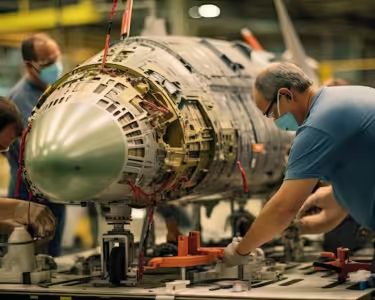ARINC 601 displays are crucial in commercial aviation because they give pilots the information they need to ensure safe and effective flight operations. To shed insight on the steps, difficulties, and results of this revolutionary project, this case study examines the effective integration of ARINC 601 displays in commercial aircraft. We get insightful knowledge about the direction of aviation technology and how it will affect efficiency and safety through practical examples.
Need for Integration in ARINC 601:
The incorporation of ARINC 601 displays into commercial aircraft is a response to the growing need for improved passenger experience, safety, and efficiency. Airlines are trying to outfit their fleets with cutting-edge avionics to enhance cockpit capabilities and optimize flight operations.
These needs are provided by ARINC 601 displays, which give pilots easy-to-understand access to critical information like weather, navigation data, and flight characteristics. These displays expedite decision-making during flight and lessen pilot workload by combining several tasks into a single display device.
Additionally, enhanced in-flight entertainment systems and real-time flight information displays made possible by ARINC 601 displays help passengers by improving their entire trip experience.
All things considered, ARINC 601 display integration provides airlines with a complete answer to the changing needs of contemporary aviation, guaranteeing efficiency, safety, and passenger happiness.

Integration Process:
The integration of ARINC 601 displays into commercial aircraft follows a systematic approach to ensure compatibility and functionality. It begins with assessing cockpit layout and requirements, followed by selecting compliant displays and conducting compatibility testing. Installation is done according to standards, with rigorous testing and validation ensuring reliability. Pilots then undergo training to utilize the displays effectively during flight operations, enhancing safety and efficiency.
Benefits and Impact of ARINC 601 displays:
The integration of ARINC 601 displays yields numerous benefits for both airlines and passengers, significantly impacting operational efficiency and safety standards.
Enhanced Situational Awareness:
- ARINC 601 displays provide pilots with clear, comprehensive information, enhancing their situational awareness during flight.
- By presenting critical data such as flight parameters, navigation information, and weather conditions in a concise and intuitive format, these displays enable pilots to make informed decisions quickly and effectively.
Streamlined Workflow:
- By consolidating multiple functions into a single display unit, ARINC 601 displays streamline cockpit operations and reduce pilot workload.
- Pilots can access relevant information seamlessly, eliminating the need to switch between different screens or manual charts.
- This simplification of workflow enhances efficiency and reduces the potential for errors during flight.
Improved Decision-Making:
- The high-resolution graphics and intuitive user interfaces of ARINC 601 displays facilitate more precise decision-making in various flight scenarios.
- Pilots can interpret data accurately and respond promptly to changing conditions, ensuring optimal flight path management and adherence to safety protocols.
Passenger Experience:
- Beyond the cockpit, passengers benefit from ARINC 601 displays through enhanced in-flight entertainment systems and real-time flight information displays.
- Interactive maps, destination updates, and entertainment options contribute to a more enjoyable and engaging travel experience, increasing overall passenger satisfaction.
Safety and Reliability:
- The integration of ARINC 601 displays enhances the overall safety and reliability of commercial aircraft operations.
- By providing pilots with critical information in real-time, these displays help mitigate risks and prevent potential incidents, ultimately improving flight safety standards.
Conclusion:
A major advancement in aviation technology, incorporating ARINC 601 displays into commercial aircraft offers observable advantages in terms of safety, effectiveness, and passenger happiness. This case study has demonstrated how these displays improve pilot situational awareness, expedite operations, and improve passenger comfort while in flight.
ARINC 601 enhances decision-making and minimizes workload by giving pilots clear, real-time information. This eventually increases operational efficiency and on-time performance. Improved entertainment options and real-time flight information also help passengers, making the trip pleasurable.
Future developments in commercial aviation will be shaped by integrating ARINC 601 displays, which will also establish new benchmarks for innovation and safety. Airlines that use this technology show their dedication to quality, guaranteeing a smooth and enjoyable travel experience for passengers worldwide.






